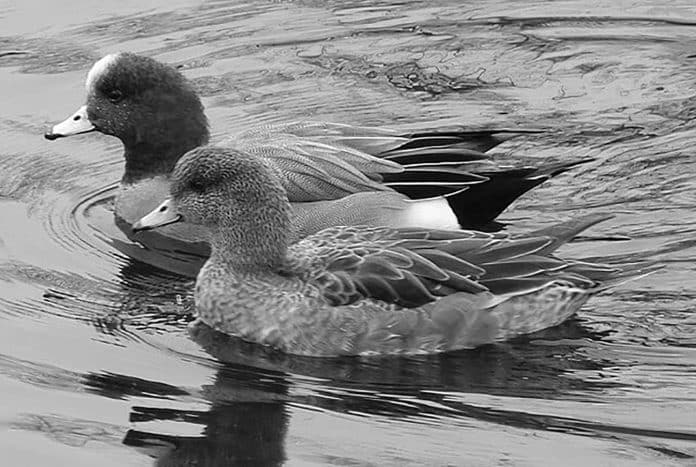From the Arctic to Africa: A Tale of the Adventurous Eurasian Wigeon in Tanzania
The Eurasian Wigeon in Tanzania, scientifically known as Anas penelope, is a migratory bird that captivates birdwatchers and nature enthusiasts around the world. With its striking plumage and fascinating behavior, this species has become a symbol of the beauty and diversity of avian life. One of the most intriguing aspects of the Eurasian Wigeon is its remarkable migration pattern, which takes it from the Arctic regions of Europe and Asia all the way to the African continent. In this article, we will delve into the journey of the Eurasian Wigeon and explore its presence in Tanzania, a country blessed with abundant natural wonders.
The Eurasian Wigeon’s migration pattern
Twice a year, the Eurasian Wigeon embarks on an extraordinary journey that spans thousands of kilometers. In the spring, these magnificent birds leave their wintering grounds in Africa and begin their northward migration towards their breeding grounds in the Arctic regions of Europe and Asia. During this arduous journey, the Eurasian Wigeon traverses vast landscapes, crossing mountains, deserts, and bodies of water. They rely on their exceptional navigational abilities and instinctual mapping of the Earth’s magnetic field to guide them towards their destination.
As autumn approaches, the Eurasian Wigeon begins its southward migration, returning to Africa in search of warmer climates and abundant food sources. This time, their journey takes them across the vast expanse of the African continent, with Tanzania being one of their favored stopover locations. The remarkable stamina and resilience of these birds during their migration is a testament to their adaptability and survival instincts.
Discovering the Eurasian Wigeon in Tanzania
Tanzania, with its diverse ecosystems and rich avian biodiversity, serves as a temporary home for the Eurasian Wigeon during the winter months. The country’s wetlands, lakes, and coastal areas provide the perfect habitat for these migratory birds to rest, feed, and prepare for their onward journey. The Eurasian Wigeon can be spotted in various locations across Tanzania, including the famous Serengeti National Park, Lake Manyara, and the Selous Game Reserve.

When visiting Tanzania, keep an eye out for the distinctive appearance of the Eurasian Wigeon. The male of the species features a beautiful combination of chestnut and gray plumage, with a creamy yellow crown and a striking white patch on its wings. The female, although less colorful, possesses a subtle elegance with her mottled brown feathers and pale yellow beak. Observing these birds in their natural habitat is a truly awe-inspiring experience.
Habitat and behavior of the Eurasian Wigeon in Tanzania
The Eurasian Wigeon is primarily found in freshwater habitats such as lakes, ponds, and marshes. In Tanzania, they are known to congregate in large numbers around the shores of Lake Manyara and Lake Victoria. These bodies of water provide an abundant supply of aquatic vegetation, which is the mainstay of the Eurasian Wigeon’s diet.
During their time in Tanzania, the Eurasian Wigeon engages in a variety of fascinating behaviors. They form small flocks and often associate with other waterfowl species, creating a harmonious and dynamic spectacle on the water. The male Wigeons engage in courtship displays, where they vigorously flap their wings and emit distinctive calls to attract mates. These vibrant displays are a sight to behold and a testament to the beauty and complexity of nature.
The Eurasian Wigeon’s role in the ecosystem of Tanzania
The presence of the Eurasian Wigeon in Tanzania plays a crucial role in maintaining the delicate balance of the country’s ecosystems. As herbivorous birds, they help control the growth of aquatic plants by feeding on them, preventing excessive proliferation that could disrupt the ecological equilibrium. Additionally, the Eurasian Wigeon serves as an important prey species for predators such as eagles, falcons, and large fish, contributing to the overall biodiversity and food web of Tanzania.
Conservation efforts for the Eurasian Wigeon in Tanzania
Despite its widespread distribution, the Eurasian Wigeon faces various threats to its survival, including habitat destruction, pollution, and climate change. Recognizing the importance of protecting this remarkable species, Tanzania has implemented conservation initiatives aimed at preserving the habitats and ecosystems that support the Eurasian Wigeon and other migratory birds.
These efforts include the establishment of protected areas and wildlife sanctuaries, as well as educational programs to raise awareness about the significance of avian conservation. By supporting these initiatives and promoting responsible tourism, we can contribute to the long-term survival of the Eurasian Wigeon and ensure that future generations can appreciate the beauty of these magnificent birds.
Best places to spot the Eurasian Wigeon in Tanzania
If you’re planning a birdwatching trip to Tanzania and hoping to catch a glimpse of the Eurasian Wigeon, there are several key locations that offer excellent opportunities for sightings. Lake Manyara, known for its diverse birdlife, is a prime spot to observe these migratory birds as they gather in large numbers along the shores. The Serengeti National Park, with its expansive wetlands and grassy plains, is another fantastic destination to encounter the Eurasian Wigeon in all its splendor.
In addition to these well-known sites, the Selous Game Reserve and Ruaha National Park also provide excellent chances to observe the Eurasian Wigeon in their natural habitat. These less frequented areas offer a more intimate and immersive birdwatching experience, allowing you to connect with nature on a deeper level.
Tips for photographing the Eurasian Wigeon in Tanzania
Capturing the beauty of the Eurasian Wigeon through photography can be a rewarding and fulfilling experience. To maximize your chances of getting that perfect shot, here are a few tips to keep in mind:
- Invest in a telephoto lens: The Eurasian Wigeon may be relatively approachable, but a telephoto lens will allow you to capture intricate details of their plumage and behavior without disturbing their natural environment.
- Be patient and observant: Spend time studying the behavior of the Eurasian Wigeon and anticipate their movements. Patience is key when it comes to wildlife photography, as it allows you to capture unique and candid moments.
- Utilize natural light: The golden hours of sunrise and sunset offer the most flattering lighting conditions for photography. Position yourself accordingly to take advantage of the soft, warm glow that enhances the beauty of the Eurasian Wigeon.
- Focus on composition: Pay attention to the surrounding environment and use it to compose visually appealing shots. Experiment with different angles, perspectives, and framing to create compelling images that tell a story.
- Respect the birds and their habitat: Always prioritize the well-being of the birds and their natural environment. Do not disturb their behavior or habitat for the sake of a photograph. Remember, the preservation of these birds and their habitats is paramount.
Joining birdwatching tours in Tanzania to see the Eurasian Wigeon
For those who wish to embark on a guided birdwatching adventure in Tanzania, joining a birdwatching tour is an excellent option. These tours are led by experienced guides who possess in-depth knowledge of the local avian species and their habitats. They will not only enhance your chances of spotting the Eurasian Wigeon but also provide valuable insights into the ecology, behavior, and conservation efforts surrounding these magnificent birds.
By joining a birdwatching tour, you will have access to specialized equipment, such as high-quality binoculars and spotting scopes, which will enable you to observe the Eurasian Wigeon up close and personal. Additionally, the expertise of the guides will ensure a safe and enriching experience, as they navigate the diverse landscapes of Tanzania in search of avian wonders.
Conclusion: Appreciating the beauty of the Eurasian Wigeon in Tanzania
The journey of the Eurasian Wigeon from the Arctic to Africa is a testament to the resilience and adaptability of migratory birds. Tanzania, with its diverse habitats and rich avian biodiversity, offers a unique opportunity to witness the beauty of these magnificent birds up close. By appreciating and protecting the habitats that support the Eurasian Wigeon, we can ensure the preservation of this iconic species for generations to come. So, pack your binoculars, grab your camera, and embark on a birdwatching adventure in Tanzania to witness the extraordinary tale of the adventurous Eurasian Wigeon.
For more articles related to Wildlife in Tanzania (Animals), click here!

































